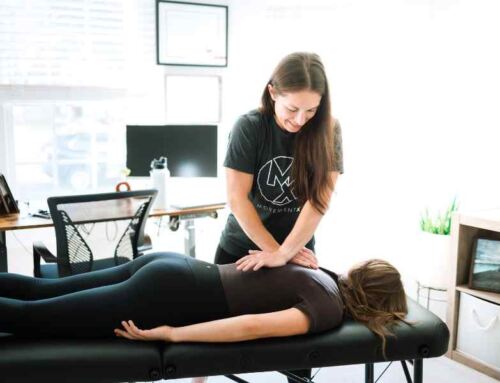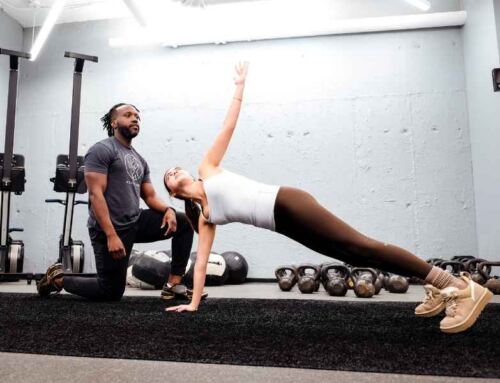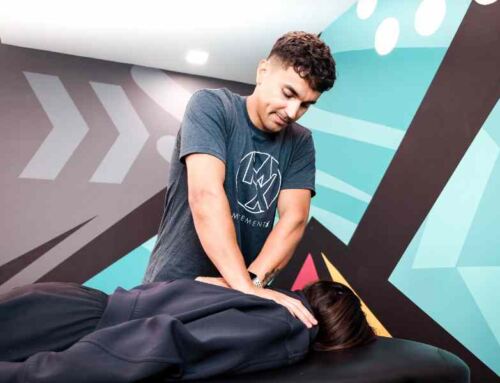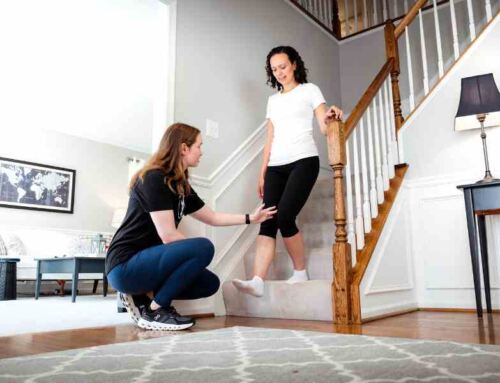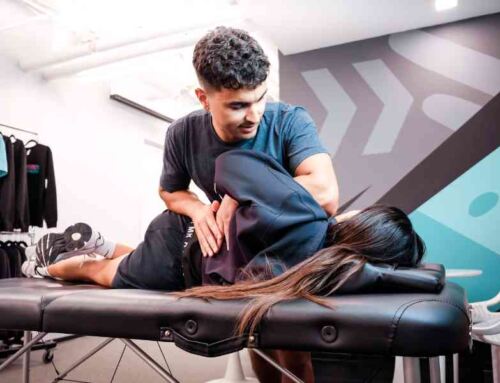Low back pain affects up to 80% of people in the U.S. at some point in their lives. For many, it can feel like a frustrating mystery — one day you’re fine, and the next, you’re struggling to get out of bed.
A common piece of advice I hear from patients is that they’ve been told to just “strengthen their core” to fix their back pain. Yet despite doing planks, crunches, or countless “core” classes, they’re still in pain and unsure why.
One of the most overlooked reasons is a condition called functional spinal instability. This isn’t about a single traumatic event or even a structural problem — in fact, it rarely shows up on any imaging at all, making x-rays and MRIs typically unnecessary (read more about this in my blog on physical therapy in direct primary care). Instead, it’s often episodic, unpredictable, and can seemingly come out of nowhere. Many people describe feeling fine for weeks or months, then suddenly have a flare-up after something as simple as tying their shoes or turning too quickly. This unpredictability leaves them feeling fragile, cautious, and constantly worried about the next flare, often leading to avoidance behaviors and a growing fear of movement.
Functional spinal instability doesn’t just show up as back pain. It’s often linked to other problems like SI joint dysfunction, sciatica, hip bursitis, IT band syndrome, plantar fasciitis, and certain types of shoulder or knee pain. When your spine isn’t controlled well, other parts of your body are forced to compensate, leading to increased stress and breakdown elsewhere.
The problem? Strengthening alone doesn’t address the deeper issue of how your body coordinates and controls movement. True long-term success requires a combination of strength and something even more important: motor control.
What Is Core Strengthening Really About?
When most people hear “core strength,” they think of abs, crunches, Pilates classes, or holding a plank for minutes on end. These movements can be a great starting point to build awareness and capacity, but they’re only one piece of the puzzle.
In reality, true core strength isn’t just about visible abs or static holds. It’s about how your deep and superficial muscles work together to support your spine and help you move with confidence.
Your transversus abdominis (TrA), multifidus, , internal obliques, diaphragm, and pelvic floor are all key players in your deep core system. Creating tension or “bracing” is important for certain movements, but these muscles also need to work together in a coordinated way to create a stable foundation that adjusts as you move.
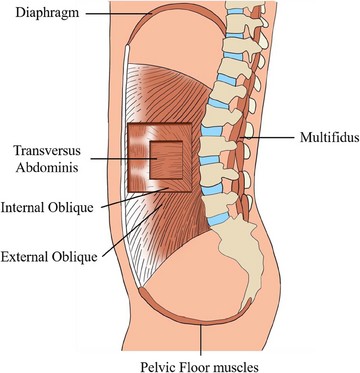
It’s not just about raw strength; it’s about having the timing and control to create support exactly when you need it — whether you’re carrying groceries, rotating through a golf swing, or even scrambling up a rocky trail.
Many programs, like the McGill Big 3 and Sahrmann bracing techniques, focus on static or isolated exercises. While these exercises can be helpful as a starting base, they are just one step in rebuilding a strong and resilient core. To truly move with confidence in daily life and sport, we need to progress beyond these basics.
The Limits of Bracing
Bracing your core is actually a great place to start, especially during an acute flare-up or when you’re feeling vulnerable. It helps provide immediate support and can reduce fear around movement in many of my own patients.
But here’s the catch: bracing alone isn’t designed to be a long-term solution. If you rely on it as your only strategy, your body learns to stay rigid and guarded rather than adapt and move fluidly. Instead of building confidence in how to move, you end up reinforcing the idea that your spine always needs to be “locked down” to be safe.
Real life isn’t static or predictable (unless you sit in one place all day for work, then we have a different problem entirely!). Your spine and core need to handle bending, twisting, and reacting quickly — whether you’re picking up a laundry basket, catching yourself on a slippery sidewalk, or playing a quick game of pickleball.
Your system needs to learn how to transition smoothly between tension and relaxation to truly feel strong and free. That’s where motor control comes in.
What Is Motor Control?
Instead of building stronger muscles, motor control is all about teaching your brain and nervous system how to plan, coordinate, and adjust movement — both consciously and subconsciously — so you can move with more confidence and less fear.
Rather than focusing only on force or strength, motor control helps your body learn when, how much, and in what order your muscles should fire to support your spine during real-life activities. This is what shifts you from feeling cautious and guarded to moving freely and confidently.
The research is clear: practicing movements that look and feel like daily life — things like lifting, reaching, turning, or balancing — leads to real, lasting changes that actually stick and carry over into the real world.
Motor control also highlights the importance of regional interdependence. Your spine never works alone. Your arms, legs, shoulders, and hips all play a role in how you stabilize and move. This is why we often include arm and leg movements, and eventually spine rotation, to teach the entire body to work together as a coordinated unit rather than as isolated parts.
Remember, everyone has to start somewhere. We must develop a personalized, smarter, more adaptable, and resilient movement system for life regardless of your pain level, current capacity, and personal goals.
Phased Progression (Where Do You Start?)
Finding your starting point is one of the most important parts of the journey. Many patients feel stuck because they’ve only been given one piece — like endless bracing or generic core exercises — without a clear path forward.
In my approach, we move through progressive phases designed to build both support and confidence, ultimately leading to efficient, powerful movement in the activities that matter most to you and designed to fit your life.
Phase 1: Stabilization Training
We start by creating foundational awareness and local muscle support. This includes breath work, gentle bracing via the transverse abdominus, and exercises like the McGill Big 3 mentioned earlier. This phase helps reduce pain, build confidence, and establish a safe base. It’s often the best starting point for someone with moderate-to-high pain levels.
Phase 2: Motor Control
Next, we teach your body how to sequence, coordinate, and adapt. You learn to move beyond rigid bracing and start using your core dynamically. We focus more on regional interdependence — how your arms, legs, and spine work together to support smooth, confident movement.
Phase 3: Functional Integration
Finally, we take these new skills and integrate them into movement patterns that make life meaningful. Whether it’s picking up your grandchild with confidence, hiking that bucket-list trail, hitting a powerful golf swing without hesitation, or simply getting through a busy day without worrying about your back — this is where all the hard work pays off.
Functional integration isn’t just about moving better; it’s about applying these new movement strategies into your daily routines and lifestyle behaviors for lasting results. It’s where you shift from just “exercising” to truly living with freedom and confidence.
These phases aren’t rigid or one-size-fits-all, and they often overlap depending on where you’re at in your rehab journey. The key is progression and integration, guided and personalized to fit your goals and motivation.
By following this approach, you’re not just fixing your back. You’re building a resilient, adaptable, and strong movement system that empowers you to get back to the activities you love and keep doing them for years to come.
Conclusion
Low back pain doesn’t have to mean endless bracing, rigid exercises, and avoiding activities (or discontinuing them altogether). By combining strength and motor control — and progressing toward true functional integration — you can move beyond fear and finally trust your body again.
This isn’t about temporary fixes or generic “core” routines. It’s about building a resilient, adaptable movement system that supports you in real life, for the long haul.
If you’ve already tried other treatments and still feel stuck — or if you’d simply like a second opinion and want to get back to regular fitness activities without fear — I’d love to help.
Let’s work together to help you move smarter, feel stronger, and live with more freedom.
References
- Hodges, P. W., & Richardson, C. A. (1996). Inefficient muscular stabilization of the lumbar spine associated with low back pain: A motor control evaluation of transversus abdominis. Spine, 21(22), 2640–2650.
- Van Dieën, J. H., Cholewicki, J., & Radebold, A. (2003). Trunk muscle recruitment patterns in patients with low back pain enhance the stability of the lumbar spine. Spine, 28(8), 834–841.
- McGill, S. M. (2015). Low back disorders: Evidence-based prevention and rehabilitation (3rd ed.). Human Kinetics.
- Behm, D. G., Drinkwater, E. J., Willardson, J. M., & Cowley, P. M. (2010). The use of instability to train the core musculature. Applied Physiology, Nutrition, and Metabolism, 35(1), 91–108.
- Macedo, L. G., Maher, C. G., Latimer, J., McAuley, J. H., Hodges, P. W., & Nicholas, M. K. (2009). Motor control exercise for persistent, nonspecific low back pain: A systematic review. Physical Therapy, 89(1), 9–25. https://doi.org/10.2522/ptj.20080103
About the Author
Dr. Adam Kays is a physical therapist and Board-Certified Orthopedic Clinical Specialist in Central Indiana. Among Adam’s treatment specialities are spine disorders, headaches, trigeminal neuralgia, and dry needling. Dr. Adam believes in empowering his patients through education and exercise self-efficacy to help you return to your favorite fitness activities better than before.



